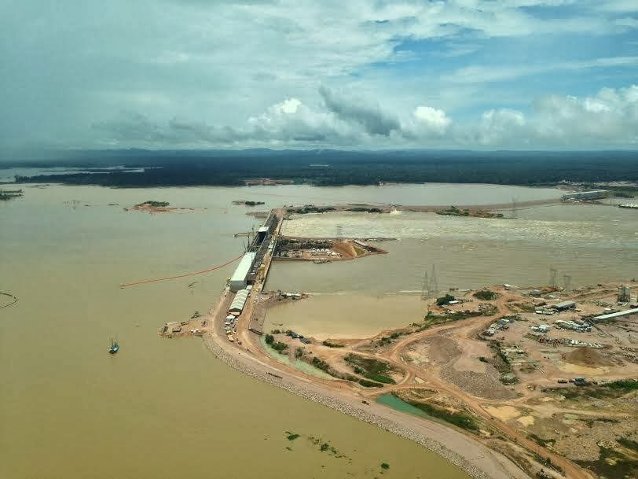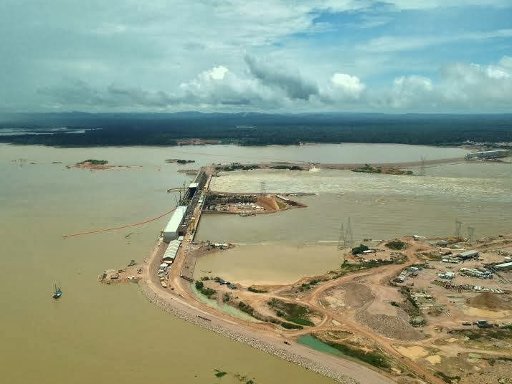
Justice Now!
Join the worldwide chorus calling for justice by urging Brazil’s Supreme Court to rule on lawsuits against the Belo Monte Dam!
Albert Einstein once said, “We can’t solve problems by using the same kind of thinking we used when we created them.” It is evident that the Brazilian government’s energy planners dismiss such wisdom, renewing their preposterous dam-driven logic in response to the latest crisis, and imperiling the Amazon’s peoples, rivers, and forests in the process. But the winds of climate change continue to blow, bringing with them crippling drought and disastrous floods that could wash away this house of cards.
As a second year of drastic drought strikes Brazil’s southeast, the government has maxed out its dirty and costly thermoelectric stations to meet a growing energy crunch. Historically low rivers and reservoirs have ground dam turbines to a standstill in a country deeply dependent on hydroelectricity. Indeed, nearly 80% of Brazil’s energy comes from dams that are built on the assumption that rainfall patterns will remain consistent. The mounting and unpredictable ravages of climate change have shattered this thinking.
With power outages wracking the country’s grid this déjà vu scenario is rightfully directing public ire and scrutiny towards the Dilma Rousseff government at a sensitive time this election year. However, while this predicament begs for innovation and vision to lead the country towards diversified, clean, and adaptable energy solutions, Rousseff’s myopic planners insist that the current crisis in the hydroelectric sector demands that the country build more dams! Mr. Einstein must be rolling over.
Meanwhile in the Amazon, where Brazil’s dam building agenda continues to steamroll human rights and ravage the environment, catastrophic floods have blown another hole in the government’s plans. The Santo Antonio and Jirau mega-dams, built on the mighty Madeira River, have the notorious distinction of being the first in a wave of Amazon dams unleashed by the Worker’s Party. Purportedly to boost Brazil’s energy production, these dams are instead exacerbating the Madeira’s worst flooding on record.
With their massive walls of concrete splayed across the river, “Madeira Complex” dams are retaining floodwaters from a river swollen with record rains, backing them into neighboring Bolivia where severe flooding has reportedly killed over 60 people and 90,000 cattle while causing inestimable damage.
The Madeira’s waters also imperil the city of Porto Velho, where thousands of families have been evacuated from the river’s wrath. Flooding is so bad that it has completely isolated the Western Amazonian state of Acre, cutting off roads and prompting governor Tião Viana to call a state of emergency. “Some consider this to be the worst environmental disaster that the Amazon has endured,” he said.
Brazil’s dams are emerging as the real villains in this story as they dramatically alter the natural flow of the Amazon River’s most important tributary, making already major flooding truly disastrous.
Raging waters have ruptured temporary earthen cofferdams on the Jirau dam, flooding its construction site and compromising its timetable to generate electricity. Downstream at the Santo Antônio dam, Brazil’s national grid operator (ONS) ordered that turbines be powered down in order to reduce flooding behind the dam. This emergency decision severed Santo Antônio’s contributions to Brazil’s grid, further aggravating the country’s energy shortage. Both of these scenarios demonstrate the fragility of Brazil’s dam-dependent model and beg the question: what could possibly incite planners to call for more of the same?
Brazilian thought leaders like Marcio Santilli of the Socio-Environmental Institute (ISA) are calling for the resignation of Energy Minister Edison Lobão in the face of this crisis, but sadly the departure of this malicious technocrat would likely do little to change the prevalent thinking in Brazil’s energy sector. This is not simply stubborn or foolhardy behavior: it’s calculated and corrupt, seeking to maintain the status quo while transferring vast public financing into the pockets of a handful of vested interests in Brazil’s construction, energy, and mining industries.
What we are witnessing in Brazil – where alarming drought and floods are rebuffing ordinary weather patterns – is exactly the kind of phenomena that climate scientists have predicted will occur with more frequency in the coming years. While climate chaos may not incite Brazil’s hydroelectric dinosaurs to make urgent steps toward policy reform, demands from a growing and engaged public certainly will. Only then will Brazil’s longstanding liability to its dam-affected communities, and the rivers upon which they depend, spell lights out on the country’s errant hydroelectric agenda.















